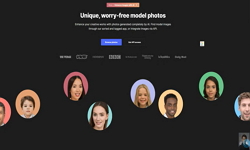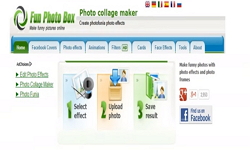해수욕장은 바다와 육지가 서로 접하는 지대이자 인간이 즐기며 놀 수 있는 환경과 시설이 갖추어진 해변 공간을 말한다. 한국은 삼면이 바다로 오늘날 약 300개의 해수욕장이 지정되고 운영...
http://chineseinput.net/에서 pinyin(병음)방식으로 중국어를 변환할 수 있습니다.
변환된 중국어를 복사하여 사용하시면 됩니다.
- 中文 을 입력하시려면 zhongwen을 입력하시고 space를누르시면됩니다.
- 北京 을 입력하시려면 beijing을 입력하시고 space를 누르시면 됩니다.

제조된 자연, 해수욕장: 한국 근대 시각 매체로 본 해변 공간의 변화 = Manufactured Nature, Beach: Changes in the Beach Space by Modern Korean Visual Media
한글로보기부가정보
국문 초록 (Abstract)
역사적으로 해안은 어렵과 조업의 장소이자 외래 문물과 문화의 교역 창구였다. 해수욕장은 이러한 산업 및 상업적 목적에서 벗어나 온전히 인간의 여가와 휴양을 위해 선택되고 인공적으로 변형된 해변 공간이라 할 수 있다. 근대기 해수욕장의 탄생은 탐승의 전통을 넘어서 인간이 자연에 적극적으로 개입하며 바다가 수영과 피서, 휴양과 결부되는 공간으로 변화되는 과정을 보여준다. 또한 이를 통해 자연이 인간에 의해 인위적으로 조성되고 개발되는 현상을 목견할 수 있다.
근대기 신문과 잡지에 게재된 사진과 삽화, 광고는 해수욕장이라는 공간에 대한 이미지를 형성하고 재현하며 근대인들에게 해수욕장을 선망하게 했다. 본고에서는 한국 근대 시각 매체를 중심으로 근대기에 자연으로 선택되고 부상한 해수욕장과 인간에 의해 제조된 해변 이미지의 변화 양상을 살펴보며 해수욕장이 근대 해변 공간을 어떻게 운영했으며 어떤 방식으로 근대인들에게 향유되었는지 고찰한다.
해수욕장은 바다와 육지가 서로 접하는 지대이자 인간이 즐기며 놀 수 있는 환경과 시설이 갖추어진 해변 공간을 말한다. 한국은 삼면이 바다로 오늘날 약 300개의 해수욕장이 지정되고 운영될 정도로 쉽게 해수욕장을 접할 수 있는 자연적 지리적 여건을 갖추고 있다. 그러나 해안선을 따라 파도와 연안류가 모래나 자갈을 쌓아 올려 만든 자연적인 퇴적 지형을 해수욕장이라 명명하고 물놀이를 위한 안전시설과 탈의실, 샤워실 등 인간의 편의를 위한 설비를 마련하기 시작한 역사는 그리 오래되지 않았다.
역사적으로 해안은 어렵과 조업의 장소이자 외래 문물과 문화의 교역 창구였다. 해수욕장은 이러한 산업 및 상업적 목적에서 벗어나 온전히 인간의 여가와 휴양을 위해 선택되고 인공적으로 변형된 해변 공간이라 할 수 있다. 근대기 해수욕장의 탄생은 탐승의 전통을 넘어서 인간이 자연에 적극적으로 개입하며 바다가 수영과 피서, 휴양과 결부되는 공간으로 변화되는 과정을 보여준다. 또한 이를 통해 자연이 인간에 의해 인위적으로 조성되고 개발되는 현상을 목견할 수 있다.
근대기 신문과 잡지에 게재된 사진과 삽화, 광고는 해수욕장이라는 공간에 대한 이미지를 형성하고 재현하며 근대인들에게 해수욕장을 선망하게 했다. 본고에서는 한국 근대 시각 매체를 중심으로 근대기에 자연으로 선택되고 부상한 해수욕장과 인간에 의해 제조된 해변 이미지의 변화 양상을 살펴보며 해수욕장이 근대 해변 공간을 어떻게 운영했으며 어떤 방식으로 근대인들에게 향유되었는지 고찰한다.
다국어 초록 (Multilingual Abstract)
Historically, the coast was a place for fishing and fishing, as well as a window for trade of foreign cultures and cultures. Beaches can be said to be beach spaces that were selected and artificially transformed for human leisure and relaxation, free from these industrial and commercial purposes. The emergence of modern beaches shows the process of humans actively intervening in nature, going beyond the tradition of exploration, and changing the sea into a space associated with swimming, vacation, and relaxation. In addition, through this, we can observe the phenomenon of nature being artificially created and developed by humans.
The photographs, illustrations, and advertisements published in modern newspapers and magazines formed and reproduced the image of the space called the beach, and made modern people long for the beach. This paper examines the changing aspects of the beach image that was selected and emerged as nature in the modern period and the beach image manufactured by humans, focusing on modern Korean visual media, and examines how the beach operated the modern beach space and how it was enjoyed by modern people.
A beach is a place where the sea and land meet and is equipped with an environment and facilities for people to enjoy and play. Korea is surrounded by the sea on three sides, and today, there are about 300 designated and operated beaches, which provid...
A beach is a place where the sea and land meet and is equipped with an environment and facilities for people to enjoy and play. Korea is surrounded by the sea on three sides, and today, there are about 300 designated and operated beaches, which provides natural geographical conditions that make it easy to access beaches. However, the history of naming the natural sedimentary terrain created by waves and coastal currents along the coastline as a beach and establishing facilities for human convenience such as safety facilities for water play, changing rooms, and showers is not that long ago.
Historically, the coast was a place for fishing and fishing, as well as a window for trade of foreign cultures and cultures. Beaches can be said to be beach spaces that were selected and artificially transformed for human leisure and relaxation, free from these industrial and commercial purposes. The emergence of modern beaches shows the process of humans actively intervening in nature, going beyond the tradition of exploration, and changing the sea into a space associated with swimming, vacation, and relaxation. In addition, through this, we can observe the phenomenon of nature being artificially created and developed by humans.
The photographs, illustrations, and advertisements published in modern newspapers and magazines formed and reproduced the image of the space called the beach, and made modern people long for the beach. This paper examines the changing aspects of the beach image that was selected and emerged as nature in the modern period and the beach image manufactured by humans, focusing on modern Korean visual media, and examines how the beach operated the modern beach space and how it was enjoyed by modern people.
동일학술지(권/호) 다른 논문
-
- 사단법인 한국문학과예술연구소
- 김정석
- 2025
- KCI등재
-
- 사단법인 한국문학과예술연구소
- 성기련
- 2025
- KCI등재
-
- 사단법인 한국문학과예술연구소
- 정하늬
- 2025
- KCI등재
-
퍼포먼스 <휴먼 푸가> 연구 - 소설 <소년이 온다>의 극화 방식을 중심으로
- 사단법인 한국문학과예술연구소
- 김영학
- 2025
- KCI등재




 DBpia
DBpia






